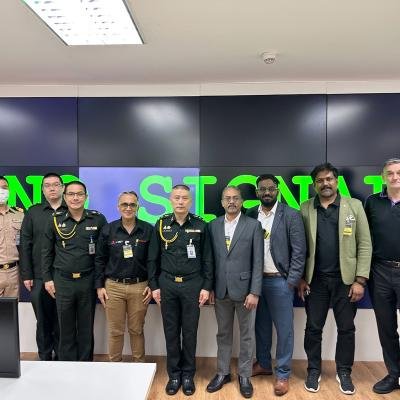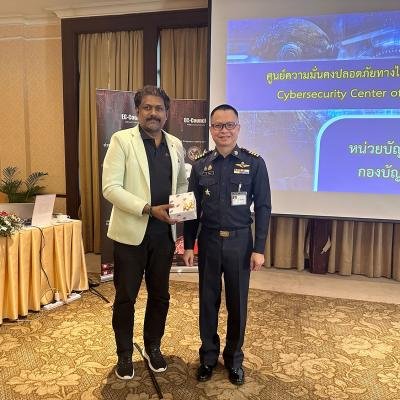In the contemporary era, where technology is omnipresent, the vulnerabilities of democratic processes to cyber threats have become increasingly evident. The world's largest democracy, India, has not remained untouched by the nefarious activities of those seeking to undermine the sanctity of elections through cyber means. This blog endeavors to delve into the intricate issue of election tampering in India, examining real-life case studies and elucidating the profound threat it poses to the democratic foundation of the nation.
Understanding Election Tampering
Election tampering encompasses a spectrum of malicious activities aimed at interfering with the electoral process. Frequently, cyber means are employed to manipulate voting systems, disseminate disinformation, or compromise the integrity of election results. As technological advancements surge forward, threat actors adapt, necessitating a constant fortification of electoral systems against these evolving cyber threats.
Case Studies
- 2019 General Elections
The 2019 Indian General Elections served as a stark reminder of the susceptibility of electoral processes to cyber threats. During this period, reports emerged of disinformation campaigns proliferating on social media platforms, attempting to mold public opinion by disseminating false narratives. Additionally, concerns were raised about the security of electronic voting machines (EVMs), with allegations of tampering and hacking swirling around.
Response and Mitigation:
- Election authorities responded by bolstering cybersecurity measures, including intensified monitoring of social media platforms.
- Recognizing the threat of misinformation, public awareness campaigns were initiated to educate voters on identifying and disregarding false narratives.
- State Elections: A Playground for Threat Actors
State elections in India have also witnessed their fair share of cyber threats, with notable instances occurring in Maharashtra and Haryana. Threat actors, in these cases, employed phishing attacks and malware to compromise the email accounts of political figures, seeking unauthorized access to sensitive information.
Response and Mitigation:
- To combat these threats, political parties and candidates received improved cybersecurity training.
- There was a reinforcement of email security protocols, including the widespread adoption of two-factor authentication to mitigate the risk of unauthorized access.
The Threat Landscape
- Disinformation and Social Media Manipulation
The proliferation of fake news and misinformation on social media platforms stands as a formidable threat to the democratic process. Threat actors exploit the viral nature of these platforms to disseminate false narratives, creating confusion among voters and potentially influencing electoral outcomes.
Countermeasures:
- Collaborative efforts between social media platforms and election authorities to identify and swiftly remove fake accounts and disinformation.
- Implementation of fact-checking mechanisms within social media platforms to verify the authenticity of information circulating during election periods.
- Vulnerabilities in Election Infrastructure
The reliance on technology in the electoral process renders it susceptible to a spectrum of cyber threats. These threats range from the hacking of EVMs to the disruption of voter registration databases, ultimately jeopardizing the integrity of the entire election.
Countermeasures:
- Regular security audits and penetration testing of election infrastructure to identify and rectify vulnerabilities.
- Implementation of end-to-end encryption and the establishment of secure communication channels to fortify the cybersecurity posture of election systems.
Safeguarding Democracy: A Call to Action
The pervasive threat of election tampering necessitates a comprehensive and collaborative response from a myriad of stakeholders, including government bodies, election authorities, political parties, and the general public.
- Legislation and Regulation
The enactment and stringent enforcement of cybersecurity laws are paramount in deterring threat actors. Governments must proactively work towards establishing a robust legal framework that specifically addresses election tampering, imposing severe penalties on those found guilty of such actions.
- International Cooperation
The borderless nature of cyber threats necessitates international cooperation. Nations must collaborate on sharing threat intelligence, best practices, and cutting-edge technologies to collectively strengthen global cybersecurity efforts.
- Public Awareness and Education
Empowering the public with knowledge is a potent strategy against disinformation. Comprehensive education campaigns focusing on identifying fake news, securing personal information, and understanding the intricacies of the electoral process can significantly enhance resilience against cyber threats.
Examples and Evidence:
- Social Media Disinformation:
- Example: During the 2019 General Elections, there were reports of disinformation campaigns on social media platforms, particularly on WhatsApp and Facebook.
- Evidence: Multiple instances of misleading information and fake news were shared widely, influencing public opinion on candidates and political parties. While it's challenging to pinpoint the exact source of these campaigns, their impact was evident in shaping narratives.
- Cyber Attacks on Political Figures:
- Example: In various state elections, political figures have fallen victim to cyber attacks, including phishing attempts and email compromise.
- Evidence: High-profile cases of political leaders' email accounts being hacked or compromised have been reported. These incidents highlight the vulnerabilities of political campaigns to cyber threats, raising concerns about the security of sensitive information.
- Electronic Voting Machine (EVM) Concerns:
- Example: Allegations of EVM tampering have been raised by political parties after election results.
- Evidence: In some instances, parties have claimed that the EVMs were manipulated to favor certain candidates. However, investigations by election authorities have consistently maintained the integrity of the voting machines, emphasizing their robust design and security features.
- Foreign Interference:
- Example: There have been suspicions of foreign entities attempting to influence Indian elections through disinformation campaigns.
- Evidence: While specific instances may be challenging to trace directly to foreign interference, the global nature of the internet allows external actors to participate in spreading disinformation. Investigations often involve tracking the digital footprint of such campaigns.
- Voter Registration Database Concerns:
- Example: Reports of vulnerabilities in voter registration databases have raised concerns about the potential manipulation of voter information.
- Evidence: Instances of data breaches and leaks have occurred, prompting authorities to address cybersecurity gaps. While the intent may not always be election tampering, the compromise of voter data poses a risk to the electoral process.
Conclusion
In the digital landscape, where information flows at an unprecedented pace, the threat of election tampering in India looms large, casting a shadow over the very essence of democracy. As we've examined through case studies, the 2019 General Elections and various state elections, the vulnerabilities of the electoral process are evident, with threat actors exploiting technological gaps to compromise the democratic fabric.
At digiALERT, we recognize that safeguarding democracy is not only a collective responsibility but an urgent imperative. The evolving threat landscape demands a dynamic and proactive response. The digital era brings both unprecedented connectivity and unforeseen risks. Disinformation campaigns, phishing attacks, and vulnerabilities in election infrastructure pose formidable challenges that require comprehensive solutions.
Our analysis underscores the importance of collaborative efforts across stakeholders. Governments must enact and rigorously enforce cybersecurity laws tailored to address election tampering, imposing stringent penalties to deter potential threat actors. International cooperation is crucial, transcending borders to share intelligence, strategies, and technologies that fortify global cybersecurity defenses.
Moreover, public awareness and education are potent tools in the fight against election tampering. Through initiatives like enhanced cybersecurity training for political entities, improved email security protocols, and public campaigns to discern misinformation, we can empower citizens to be vigilant guardians of their democratic rights.
In the ever-changing digital landscape, digiALERT advocates for a proactive stance against cyber threats. Regular security audits, technological advancements in encryption, and continuous monitoring of social media platforms are essential steps in mitigating the risks posed by malicious actors. As a nation, India must not only adapt to technological advancements but lead in establishing best practices that set a global standard for secure democratic processes.
In conclusion, the threat of election tampering in India is a call to action for all stakeholders. At digiALERT, we are committed to advancing technological solutions, fostering international collaboration, and promoting public awareness to fortify the foundations of democracy. Together, we can navigate the challenges of the digital age, ensuring that the democratic spirit thrives, unblemished by the shadows of cyber threats.







